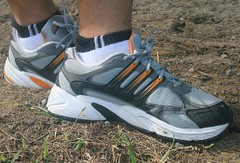The duodenum is the first few feet of the small intestine. We can say that it is the most active part of the digestive system since all types of food are digested here. The liver and the pancreas are playing very important role here. Before we discuss digestion in the duodenum, lets discuss the liver and the pancreas briefly.
THE LIVER

THE LIVER
- The role of the liver in digestion is to manufacture BILE.
- Bile is a green watery fluid containing NO ENZYMES. It contains BILE PIGMENTS (hence the green colour) formed from the breakdown of haemoglobin in the liver. It also contains BILE SALTS which helps to emulsify fats.
- What is EMULSIFICATION? The breakdown of fat globules into smaller fat droplets (to increase the surface area so as to facilitate enzyme action). Note that, emulsification only breaks the fats physically but it does not change the fats chemically.
- After the bile is manufactured it is then stored in the GALL BLADDER. The presence of food in the duodenum triggers the secretion of bile from the gall bladder into the duodenum through the bile duct.

- EMULSIFICATION IS JUST LIKE CUTTING A BIG CHUNK OF BUTTER INTO SMALLER CUBES. THEY ARE ONLY DIFFERENT PHYSICALLY BUT STILL THE SAME CHEMICALLY. AND THINK! WHICH WILL MELT DOWN FASTER, THE CHUNK OR THE CUBES? OF COURSE THE CUBES RIGHT? SIMILAR TO FAT GLOBULES AND FAT DROPLETS, ENZYME REACTION WILL BE FASTER ON THE DROPLETS RATHER THAN ON THE GLOBULES.
THE PANCREAS
- The important role of the pancreas in digestion is to produce PANCREATIC JUICE.
- Pancreatic juice contains SODIUM HYDROGEN CARBONATE, PANCREATIC AMYLASE, LIPASE and TRYPSINOGEN.
- The sodium hydrogen carbonate helps to neutralise the acidic chyme once it enters the duodenum
WHAT HAPPENS IN THE DUODENUM?
- As mentioned earlier, the duodenum is very active since all types of food are digested here.
- Apart from the BILE and the PANCREATIC JUICE, the duodenum itself secretes the INTESTINAL JUICE produced by the intestinal glands in the wall of the duodenum itself.
- The intestinal juice contains ENTEROKINASE, EREPSIN, MALTASE, SUCRASE, LACTASE and LIPASE.
- So all three juices are actually working together in the duodenum to digest all types of food present in the chyme. To make our life easier, lets discuss the roles of the contents of the juices by the types of food they work on.
CARBOHYDRATE DIGESTION IN THE DUODENUM
- The remaining undigested starch from the mouth is digested by the pancreatic amylase into maltose and the maltose is further digested into glucose by maltase.
- Lactose is digested into glucose and galactose by lactase.
- Sucrose is digested into glucose and fructose by sucrase.
PROTEIN DIGESTION IN THE DUODENUM
- Trypsinogen is first activated into trypsin by enterokinase.
- Trypsin then digests proteins into polypeptides.
- Polypeptides are then digested further by erepsin into amino acids.
FATS DIGESTION IN THE DUODENUM
- Bile first emulsify fat globules into fat droplets (SURFACE AREA!!!).
- The fat droplets are then digested chemically by lipase into FATTY ACIDS and GLYCEROL.
END PRODUCTS OF DIGESTION
- Carbohydrates --> GLUCOSE, FRUCTOSE and GALACTOSE
- Proteins --> AMINO ACIDS
- Fats --> FATTY ACIDS and GLYCEROL
NOW, THE MOLECULES ARE SMALL ENOUGH TO BE ABSORBED BY THE VILLI IN THE ILEUM!!!
